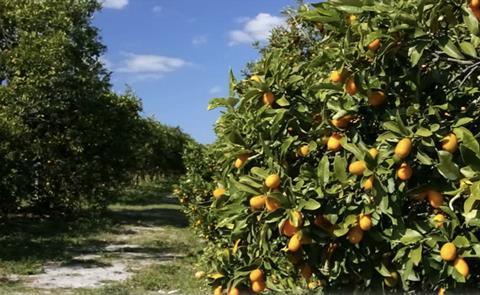Five-year plan aims to boost the competitiveness of citrus industry

The Moroccan government has announced a new subsidy plan to bolster the export of fresh citrus fruits in the wake of strengthening competition from Egypt and other suppliers.
The plan, which covers all varieties except for Nadorcott mandarins, sets out a financial support mechanism for a period of five years, starting in 2024 and culminating in 2028. It provides a subsidy of MAD 1,000 (around €90) per tonne for exports of fresh citrus to the European Union, UK and African countries.
The aid is granted exclusively to exporting packaging units with a valid license and having carried out actual exports during the relevant marketing year. It is subject to an annual eligible quantity ceiling, starting at 65,000 tonnes for 2024 and rising to 125,000 tonnes in 2028.
This means the subsidy ceiling is set at €6mn for 2024, increasing to €8.3mn in 2025, €11mn for 2026 and 2027, and €11.5mn in 2028. These figures may be adjusted based on actual export volumes.
Kacem Bennani Smires, president of Moroccan citrus federation Maroc Citrus, said the plan is designed as a show of support for orange producers struggling to compete with Egyptian growers. “The government is sending a signal to exporters to help themselves,” he told Fruitnet. “But it’s worth remembering that the new measures will apply to less than 10 per cent of Morocco’s annual exports in volume and 2 per cent of total export income.”
Bennani Smires explained that whereas previous government subsidies had been based on a differential relative to a reference year, the new programme contract is based on a per-kilo method. In an interview with Medias24, he said: “Now, we know that for everything we export to Europe, outside of Nadorcott, we receive MAD 1 per kilo up to 65,000 tonnes for the first.
“The main idea is to try to encourage the export of oranges, which are undermined by Egypt’s competitiveness. This situation means that the citrus season practically stops at the end of the Nadorcott. As a result, packhouses operate for five months instead of seven to eight months, which affects their profitability and has a direct social impact on the workers in the houses. This is the first expected benefit of the new system.”
Bennani Smires said the new plan would also increase the availability of non-export grade fruit for juicing plants.
He continued: “And the third benefit is that when we export, we harvest earlier. And when we harvest earlier, we give the tree a better chance to regenerate, to have a better yield the following year.
“This is one of the most important points. The longer farmers keep their produce on the tree, the more they can sell at higher prices the first year. But the following year, the tree is tired, it loses yield. And the third year as well, and so on. In the end, the trees end up losing their productive capacity. And so yields decrease. And when yields decrease, the cost price per kilo becomes much higher. It’s a kind of vicious circle, which we need to break to improve our yields.”
Asked about the outlook for Morocco’s citrus industry, Bennani Smires noted: “This is good news, but it doesn’t solve everything. Due to the devaluation of their currencies, Egypt and Turkey remain significantly more competitive than us, even with the support we’re going to receive. But this measure will still help us a little.”
He continued: “We are very well set in easy peelers. As for oranges, who knows what the long-term trend will be? Egypt has seen massive investment in citrus plantings and even though soaring juice prices have diverted some volumes to processing, pressure remains very high.
“There is talk of big investments in juicing plants in Egypt but we will have to wait to see how the situation develops. A lot depends on how the citrus greening issue advances in Brazil. Once trees have been contaminated it’s very difficult to get rid of the disease.”



